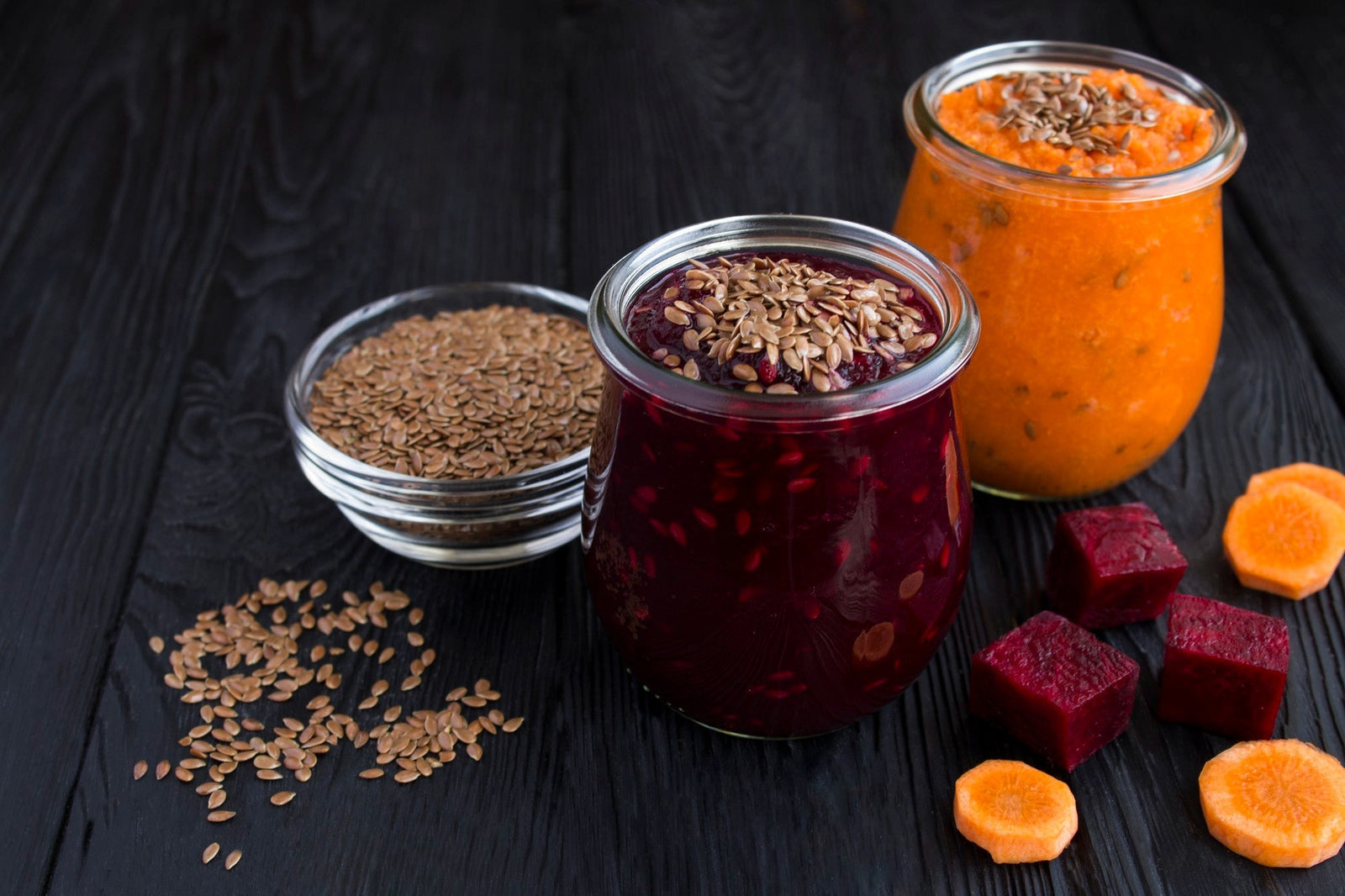
August 07, 2023 3 min read
In the world of healthy and delightful baking, coconut flour takes center stage as a versatile and nutrient-rich alternative. Derived from dried coconut meat, this fine powder not only offers a gluten-free option but also packs a punch of essential nutrients. In this article, we'll explore the wonders of coconut flour and how to make it a staple in your kitchen. Get ready to discover a world of gluten-free goodness and nourish your body with scrumptious creations.
Coconut flour is special because it's different from regular flours. It's full of dietary fiber, which helps with digestion and makes you feel full. Plus, it has healthy fats called medium-chain triglycerides (MCTs) that the body uses for energy. It's also loaded with important vitamins and minerals like iron, manganese, and copper, which help give you energy and keep you healthy. And the best thing is, coconut flour is low in carbs, making it a great choice for people on a low-carb or ketogenic diet.

Baking using coconut flour is a game-changer if you have celiac disease or gluten allergies. It is naturally free of grains and gluten, so you can make delicious delights that are suitable for everyone to enjoy. But wait, due to its special characteristics, dealing with coconut flour requires a little care.
Since coconut flour is so absorbent, recipes frequently call for less flour than those that use regular flour. To get the ideal consistency, you'll also need a higher liquid-to-flour ratio. Coconut flour can be combined with other gluten-free flours, such as almond or tapioca flour, to create baked items with the ideal texture and flavor.
To unlock the full potential of coconut flour, consider these essential tips and tricks:
Be Precise: When working with coconut flour, accuracy matters. Follow your recipes carefully as even slight changes can impact the final results.
Give It Some Binding: Eggs are fantastic allies when baking with coconut flour. They help bind the ingredients together and provide structure to your creations.
Liquid Love: Make sure you add enough liquid to create a smooth and consistent batter or dough. This will prevent your goodies from turning out dry or crumbly.
Let It Rest: Allow your coconut flour to hydrate for a few minutes before using it in your recipe. This simple step helps achieve the perfect texture.
Embrace Creativity: Don't be afraid to experiment and make adjustments in your recipes. With a bit of trial and error, you'll find the sweet spot that suits your taste.
Coconut flour opens the door to a world of scrumptious possibilities in the kitchen. From fluffy pancakes and moist muffins to decadent cakes and savory bread, your culinary adventures have no limits. Here are some mouthwatering recipes to kickstart your coconut flour journey:
Fluffy Coconut Flour Pancakes: Start your day with a stack of gluten-free goodness.
Irresistible Coconut Flour Banana Bread: Enjoy a slice of moist and flavorful banana bread, minus the gluten.
Coconut Flour Chocolate Chip Cookies: Satisfy your sweet tooth with these delightful gluten-free treats.
Zesty Coconut Flour Lemon Cake: Tickle your taste buds with the tangy delight of this lemony cake.

Besides being gluten-free, coconut flour comes bearing gifts of numerous health benefits. Its high fiber content is a boon for digestion and gut health. The MCTs in coconut flour provide a quick and sustained source of energy, perfect for pre- or post-workout snacks.
Additionally, the healthy fats in coconut flour support brain function and may even help improve cholesterol levels. For those managing their blood sugar or diabetes, coconut flour's low glycemic index can be a real asset.
Beyond baking, coconut flour is a versatile addition to various dishes. Use it as a natural thickening agent in soups and stews or as a flavorful coating for meats and veggies. You can even toss some coconut flour into your smoothies for an extra dose of fiber and healthy fats.
Coconut flour is a gluten-free and nutrient-rich treasure that elevates your culinary creations while nourishing your body. With its versatility and health benefits, this incredible flour opens the door to a world of delightful possibilities in the kitchen.
So, dive into the magic of coconut flour and explore the exciting realm of gluten-free baking. Whether you have gluten sensitivities or simply want to enrich your diet with wholesome ingredients, coconut flour is a fantastic choice.
❤ Try our USDA certified organic Coconut Flour ❤
Related Recipes:
Comments will be approved before showing up.

January 27, 2025 3 min read
Flaxseed, the tiny yet powerful superfood, is packed with nutrients that can support weight loss. From curbing hunger to stabilizing blood sugar, this guide dives into the science of how flaxseed can help you shed those extra pounds.

December 11, 2024 3 min read
Discover three quick and easy soup recipes featuring organic small red beans. From a classic vegetable soup to a creamy potato blend, these wholesome recipes are perfect for chilly days and busy weeknights. Packed with flavor and nutrition, these soups will warm your heart and soul this winter!

December 06, 2024 3 min read
This vibrant and nutritious Green Lentil Salad combines tender lentils with grilled chicken, fresh vegetables, and a zesty lemon dressing. Packed with protein, fiber, and essential vitamins, it’s the perfect healthy meal for any time of day.
© 2026 Be Still Farms- Real, Fine Organics.
Privacy | Terms | Refund Policy | Organic Certification
